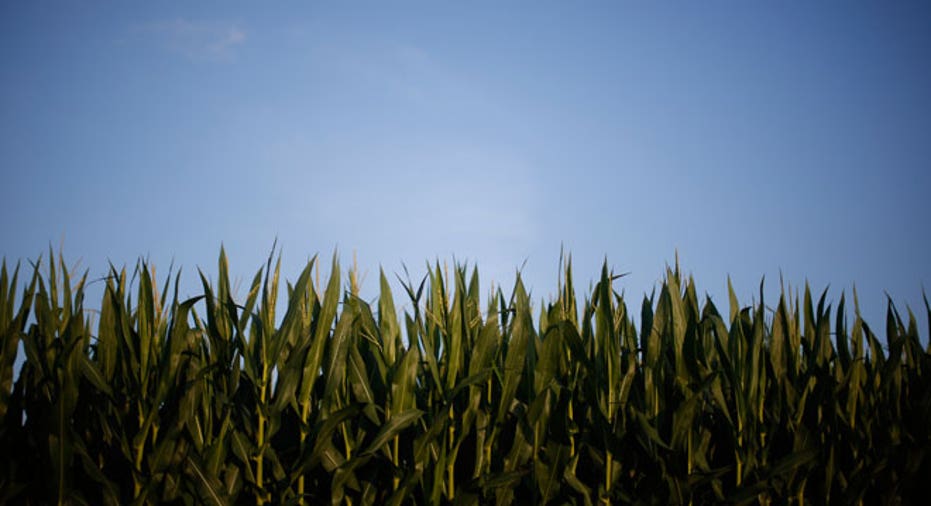Here's How Some Firms Will Benefit from Falling Corn Prices

I find that investors all too often focus primarily on the revenue line and neglect the cost side of the equation. As any college or graduate student studying finance or accounting can tell you, a company’s gross profit is determined by the trends in both its sales and its costs of goods sold. That means paying attention to input prices. And while a lot has been written thus far in 2014 over the rise in the protein complex prices – beef, pork, and shrimp – and price increases from Sonic Corp. (NASDAQ:SONC), McDonald’s (NYSE:MCD), Chipotle Mexican Grille (NYSE:CMG), Starbucks (NASDAQ:SBUX) and others, there are examples of price declines that stand to benefit companies. Some examples include the recent drop in sugar prices as well as the sharp year-over-year drop in cotton, but the big fall over the summer has been in corn prices. Over the last four months, corn spot prices have fallen 30%.
Why the drop? Expectations for the corn crop have been steadily moving over the last few months and now the U.S. Department of Agriculture is expecting a record corn harvest. A separate survey last week indicated a dry July might bring down yields a bit, though not significantly. Making matters worse, the USDA estimates China could be sitting on 150 million tons of grains such as rice, wheat and corn. Per the data, that is double the 75 million tons last year and adds to an oversupply of these agricultural commodities.
On the one hand, those low prices are bad for farmers as it saps their income, and that means bad news for agricultural equipment companies like Deere (NYSE:DE) and AGCO (NASDAQ:AGCO). How bad is it? Deere has announced it will lay off 1,000 workers, and Wells Fargo (NYSE:WFC) is saying the farm equipment cycle peaked last year!
On the other hand, however, falling input prices – commodity or otherwise – will in all likelihood lead to a better cost structure or said another way -- better margins. Investors in Starbucks (NASDAQ:SBUX) shares saw this during 2011-2013, when the coffee giant’s margins rose to 28.3% in 2013 from 26.3% in 2010 as coffee prices cratered. That proved to be a great time to own Starbucks shares, which climbed from $31.73 at the end of January 2011 to $81.35 in late November of last year. The potential for margin expansion is even better when a company benefits from falling input costs and prior price increases that were put in place to fend off the initial climb in input prices.
While it’s easy to focus on the pain, it’s the savvy investor that asks one of the first questions pondered by an ace detective when confronted with a new case – who benefits?
In this case the question is which industries and companies benefit from falling corn prices?
The short answer is plenty of them. While most people tend to think of corn that they eat, the reality is corn has a vast number of uses and is found in a hundreds of products. Granted feed usage is a top contender, but some of the other uses of corn include a number of industrial uses (plastics, adhesives, book binding agents, lubricating agents, fillers and caulks to name but a few), pharmaceutical & cosmetic uses (soaps, disinfectants, surgical dressings), food (soft drinks, canned juices, condiments, cooking oils) and fuel (engine fuel and fuel octane enhancers). A comprehensive snapshot on corn uses from Iowa State University can be found here.
Examples of companies that count corn as a major cost component include Tyson Foods (NYSE:TSN), Pilgrim’s Pride (NYSE:PPC), General Mills (NYSE:GIS), Post Holdings (NASDAQ:POST), Coca-Cola (NYSE:KO), PepsiCo (NYSE:PEP), Dr. Pepper Snapple (NYSE:DPS), Revlon (NYSE:REV), Estee Lauder (NYSE:EL), Proctor & Gamble (NYSE:PG) and dozens of others.
Before you jump the gun, it’s one thing to identify those industries and companies that are likely to see the benefit of falling corn prices on their businesses. It’s something else to cull through those companies to zero-in on the ones that will see the benefits drop to their bottom line. For example, the drop in corn prices is likely to have a more pronounced benefit on companies like Pilgrim’s Pride and Sanderson Farms because feed accounts for 40%-45% of their costs of good sold. By comparison, corn likely has a far smaller impact on the cost structure of Proctor & Gamble.
Chris Versace, portfolio manager of The Thematic Growth Portfolio and editor of the investment newsletter PowerTrend Profits, has no positions in any companies mentioned.